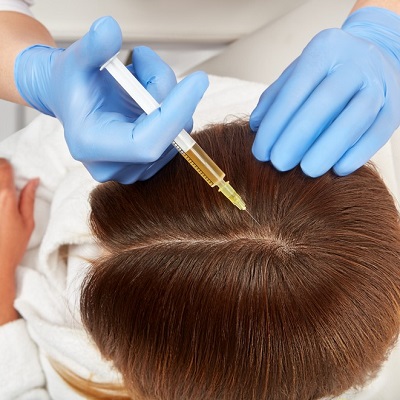Platelet-Rich Plasma (PRP) therapy has gained significant attention as a promising treatment for hair loss, particularly for individuals experiencing androgenetic alopecia, also known as male or female pattern baldness. As with any medical procedure, questions about safety are paramount. In this blog, we will delve into the safety of PRP therapy for hair restoration, the potential side effects, and what patients should know before undergoing treatment.
Understanding PRP Therapy:
PRP therapy in Islamabad is a minimally invasive procedure that utilizes a patient’s own blood to promote hair growth. The process involves three primary steps:
- Blood Collection: A healthcare professional draws a small amount of blood from the patient, typically from the arm.
- Processing: The blood is placed in a centrifuge, which separates the platelets and plasma from other components of the blood. This concentrated solution, rich in growth factors, is what is used in the treatment.
- Injection: The PRP is injected into the scalp, specifically targeting areas of thinning or balding hair.
Because PRP therapy uses the patient’s own blood, it is generally considered safe and carries a low risk of adverse reactions.
The Safety Profile of PRP Therapy:
- Biocompatibility: Since PRP is derived from the patient’s own blood, the risk of allergic reactions or rejection is minimal. This autologous approach enhances the safety of the procedure compared to treatments that use foreign substances.
- Minimally Invasive: PRP therapy is a non-surgical procedure, meaning there is no need for incisions or anesthesia. This significantly reduces the risk of complications commonly associated with surgical procedures, such as infection or prolonged recovery time.
- Regulatory Oversight: PRP therapy is performed in various clinical settings, including dermatology and cosmetic surgery clinics. Many of these facilities adhere to strict safety protocols and regulatory standards, ensuring that the procedure is conducted in a safe and sterile environment.
Potential Side Effects:
While PRP therapy is generally safe, patients should be aware of potential side effects, which can include:
- Mild Pain or Discomfort: Some patients may experience slight pain or discomfort at the injection sites. This is typically short-lived and can be managed with over-the-counter pain relievers.
- Swelling and Bruising: Temporary swelling, bruising, or redness may occur in the areas where PRP is injected. These effects usually resolve within a few days.
- Headaches: Some individuals report mild headaches following the procedure. This side effect is generally transient and can be alleviated with rest and hydration.
- Infection Risk: Although the risk is low, there is a possibility of infection at the injection sites. Ensuring the procedure is performed in a sterile environment by a qualified professional can help minimize this risk.
- No Immediate Results: It’s important for patients to understand that while PRP therapy is safe, it may take several months to see noticeable results. Patience is key, as hair regrowth is a gradual process.
Who Should Avoid PRP Therapy?
While PRP therapy is safe for many, certain individuals may be advised against it:
- Blood Disorders: Patients with blood-related conditions, such as platelet dysfunction syndromes or certain clotting disorders, may not be suitable candidates for PRP therapy.
- Chronic Infections: Those with active infections, particularly on the scalp, should avoid the procedure until the infection is resolved.
- Cancer Patients: Individuals undergoing cancer treatment or those with a history of cancer should consult their healthcare provider before considering PRP therapy.
- Pregnant or Nursing Women: Due to limited research on the effects of PRP in pregnant or nursing women, it is often recommended to postpone treatment until after breastfeeding.
Conclusion:
In summary, PRP therapy for hair restoration is generally considered safe, with a low risk of serious side effects. The use of the patient’s own blood minimizes the likelihood of allergic reactions and complications associated with surgical procedures. While mild discomfort and temporary side effects may occur, these are typically manageable and short-lived. As with any medical treatment, it is essential for individuals to consult with a qualified healthcare provider to determine if PRP therapy is the right option for their specific needs. By understanding the safety profile and potential risks, patients can make informed decisions about their hair restoration journey.
For more information visit Dynamic Clinic PK



